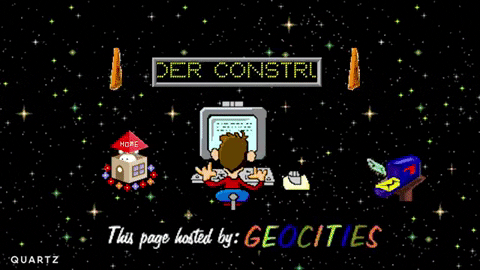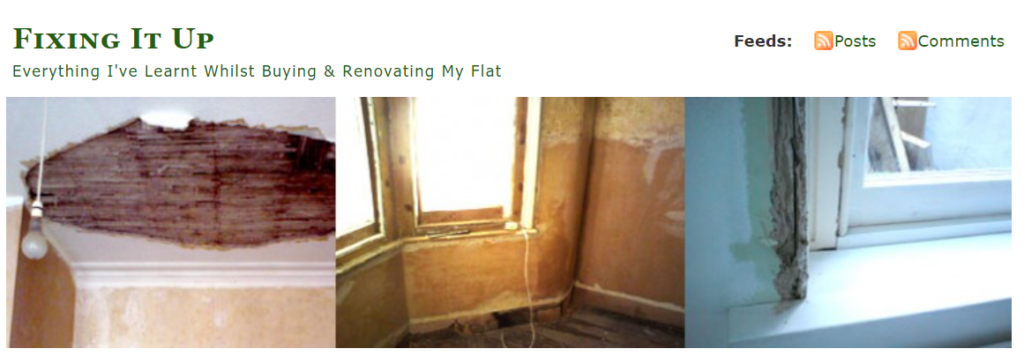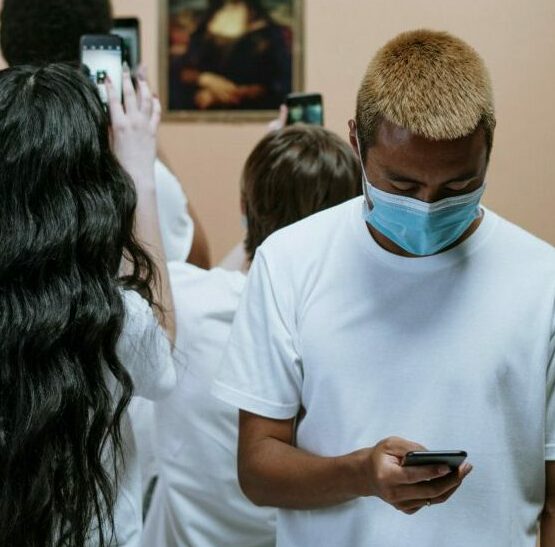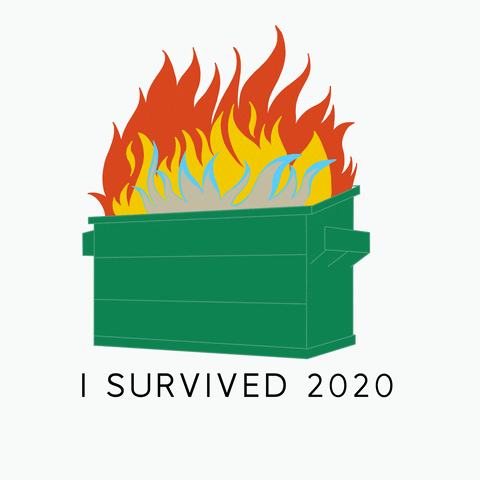I don’t usually do a public year-end round up, but this year, this year in particular, it felt like that might be a very useful exercise.
2020
I guess I have what used (?) to be called a portfolio career, as illustrated by the wide range of projects I’ve been working on since last January. Most people who find this blog post will know my work in digital, maybe educational games or consultancy, but I’ve also had a fairly leftfield side hustle going on for the last two years as well. Of which, more later.
In the “regular” job, I started the year feeling the post-project haze of working on the It’s Our Time campaign with Comms Lab (and other partners), creating materials to support their goal of getting young people registered to vote and to stand up for climate issues in the last election (remember that?). 2.5 million people in the target age group were registered, in no small part down to these efforts. I was just a small cog in this brilliant machine, you can read the report on what we did and how, here.
I wanted to do more in the area of climate change as it’s a subject I am passionate about (there is still time to make a difference!). So I spent the beginning of the year scouting around for similar opportunities with little luck, although I did come across the climate.tech community. It’s worth joining if you are similarly interested in the subject, although the volume of posts can be a little overwhelming.
I also began consulting work with a previous client, the excellent Teach Your Monster to Read (a rare edtech success story), digging into some issues around a new strategy for their range of learning games. As usual, this involved going back to basics – getting clarity around objectives before working out how to tackle them. Honestly you don’t need to hire me, you could just stick two post-its to your work wall: “BUT WHAT ARE YOUR OBJECTIVES?” and “DOES THIS MEET YOUR OBJECTIVES?” and be done with it.
I jest, it’s not that simple so you should definitely hire me. (Although, it kind of is). I also recommended and carried out some user research on how potential new products were viewed to answer various questions that were blocking decisions from being made.
Around this I was also doing my two day a week job as Project Coordinator for the SOAS Centre of Yoga Studies. That one might require some explanation. In 2017 I started a Masters degree at SOAS in Traditions of Yoga and Meditation… I guess that, too, might require some explanation. The short version is, that after years of karate training, I realised it had wrecked some of my joints, and that it was no longer physically sustainable. I got into yoga instead, and then, really into yoga. It was transformative, but I didn’t understand why.
So I did a yoga teacher training course in 2016, mostly out of personal interest. It was spectacular. Based in a beautiful Buddhist monastery outside of Kathmandu, we were woken around 6 by the sound of the horns and drums during morning prayers. After a big rain, the smog would clear from the valley and we could see across the city to the Himalayas, including what I think was Langtang Lirung. One could almost believe anything, in a setting such as this. But still, as a natural sceptic, I left the training with a lot of questions (also a tattoo and a chest infection, but mostly questions). When I found there was a Masters at SOAS in the history of these practices, I had to do it, and started in 2017.
Should you somehow be oblivious to the current state of academic yoga studies, you should know that SOAS has recently been leading the field. There has been a major EU funded research project situated there for the last 5 years, the Hatha Yoga Project, led by Dr James Mallinson (also chair of the Centre of Yoga Studies). If you are scoffing at the very idea, no doubt based on a preconception of yoga as essentially a sport for bendy people and hippies, we should have a chat some time. The history of yoga and meditation is absolutely fascinating, an incredible lens on the development of Indian religion and philosophy and the impact this has had on the world. It is tangled and complex and problematic and hotly debated and extremely political. And nascent. One could still be an Indiana Jones in this field, uncovering a dusty manuscript somewhere that changes everything.
Anyway, the Masters has been a trip. I’ve loved it. I entered a whole new world of knowledge, and raised my general level of academic critical thinking and research skills. I did two years of Sanskrit with it and it was like learning a new code that opens up a huge box of treasures. And at the end of the first year, I got involved with the new Centre of Yoga Studies at SOAS, and became its first actual staff member as Project Coordinator on two days a week, realising the vision of the steering committee and Chair. Mainly we ran events that disseminated the latest scholarship to as wide an audience as possible, as well as an internationally attended and widely regarded summer school. We had a Facebook group and an Instagram account. With the limited time available, that was about all I could manage, although we had aspirations to do more. By February of 2020, we had a few thousand Facebook and Insta followers, had run many many successful events and the summer school preparation for 2020 was well underway.
And then, Covid-19. I felt the initial impact in two main areas. Firstly, with my work at SOAS. We quickly realised that the massive amount of uncertainty made the Yoga Studies summer school a big risk, especially since we relied on overseas students. In the end we cancelled it, rather than trying to replicate an intensive format that relied on personal learning time with renowned scholars online. But for our events programme, lockdown was a boon. We flipped quickly to a Zoom based format, recording the events and putting them on a new YouTube channel (videos from early October and before are the ones I was responsible for).
It was nothing fancy, well below the production values that I would adhere to for my other day job. Just minimally edited recordings of the Zoom presentations, with all the lagginess and low resolution that this entails. They were also over 1 hour long and often on very academically dense subjects. Based on the received wisdom about how long YouTube videos should be and the ideal content, they should have flopped. And yet they were a relative hit, quickly racking up hundreds of views. There is a keen audience out there for this stuff and they don’t care what it looks like, they just want access to the scholarship.
In terms of running the events themselves, I have written up our format and process in a previous post. We kept them very locked down and used Sli.do to manage the Q&A. We had absolutely no trouble with our audience as a result, and were often complimented on how well run the events were, which I was very pleased about.
The other area was in my volunteer/activism work within XR Southwark. I’d been increasingly involved with XR since they first started their activities in 2018, especially the local group. Unlike the media picture of XR, the local groups tend to be much more grassroots, supporting local campaigns and activities such as community gardens. When lockdown was announced, XR mobilised its networks to help out with mutual aid groups. It also moved in-person meet-ups to Zoom, a tool it had already been using heavily for delivering remote training. In Southwark we realised that our experience with Zoom could be really beneficial to other local groups and charities who were suddenly having to navigate this new online world. So, we started offering free Zoom training sessions to anyone who might find them useful, which I developed based on the general XR training and delivered with the help of some others in the group. Again, the details of this are written up in my previous post.
I’m very proud of the response to this, we ran these sessions twice a week until interest eventually tailed off (I guess most people had figured it all out after a while). Attendees came from a wide variety of community groups, charities, local services and even bigger organisations and we had lots of positive comments, with one woman saying it had saved her from absolute despair at the idea of trying to move her service for vulnerable adults online. And it’s added another dimension to my work, as organisations have started asking me to deliver paid workshops in this area too.
Otherwise, though, I was largely able to continue with my work as before, since I was well used to working remotely. After a number of fallow years on the books of the National Lottery Heritage Fund as a Digital Consultant, I was given a lovely project in Scotland to act as a mentor on, and then later in the year four more in England that had been funded under the Digital Confidence Fund. All small local heritage projects, with a variety of different and overlapping needs in working out how to do their usual activities remotely and build their digital skills and resilience.
I love this work, taking all my years of experience on digital projects and figuring out how to use that to advise organisations working on a small scale with very specific needs. It’s rarely the case that they just need MORE DIGITAL. Sometimes less, in fact (e.g. running an Instagram account is very time consuming, does this actually meet their objectives and is it really where the target audience are?). It’s a learning curve for both me and the client, I think, and a balance between advising and upskilling. Anything I suggest has to be sustainable for when I’m not around, of course.
In June I took part in a panel for the National Holocaust Centre and Museum in the UK entitled “Do we need new art forms to teach the Holocaust?”, timed around the launch of their own story app, “The Journey”. You can watch this here (or here on Vimeo), it was an interesting discussion, certainly for me to take part in and hopefully for the audience as well.
I also started gathering up anti-racism resources being shared whilst the Black Lives Matter movement was making headlines. It was great to see more discussion of practical steps to tackle structural racism, from education to hiring practices, something I’d found missing in e.g. diversity or unconscious bias training I’d taken part in, so wanted to collect it all up. Now I have LOADS, and am still trying to figure out what to do with it all, but will post about this in more detail soon, I just need to tidy them up a bit more before sharing. Life got in the way of that one, but I’m posting here as a kick up the bum to do something with this!
At the beginning of the summer I began consulting work with Unthinkable and Clore Leadership on delivering a previously developed digital strategy. Not much to say on that at the moment, much more work to be done in 2021 on this. And there was another new client, the National Lottery Community Fund, on a slightly different project: analysing a big qualitative data set from a funding call for the Climate Action Fund, trying to pull out useful insight from 600+ open field responses. I was excited to try some qual coding tools to see whether they could help, and was frankly disappointed. I tried NVivo, spending quite some time setting up the code, and then just found it so incredibly slow to code each item that despite its evident power, it was unusable. I also tried Quirkos which was, sorry, so fugly and clunky that it was also no help. In the end I used a pen and paper and tally system, and it was a lot faster. (Any recommendations for other tools very welcome).
I continued various volunteer jobs: admin with the brilliant Bike Project and mentoring with Bethnal Green Ventures (Tech for Good start up accelerator) and Digital Candle (free digital advice for charities). But I stepped away from XR, at least for the moment. The evidence suggests that most people accept that we are in a climate emergency, but just don’t know what they can do about it. So I want to focus more on positive solutions and future visioning in this area, not just negative disruptive campaigning. I tried setting up a new mini venture in this vein (The Sunny Upside) but it proved difficult to get traction with it and put enough time into it to make it work (I am no sort of social media influencer). Might revisit that at some point though.
Meanwhile, I’d also decided to turn my life upside down, joining the London exodus and heading to the Isle of Wight, where I grew up and where the rest of my family live. I’ve been here ever since, house hunting (unsuccessfully so far, but anyway). The decision was undoubtedly lockdown-prompted, a desire for countryside and the sea and more space. Like many others, I also realised that the increasing move to remote working meant that I finally could leave London without sacrificing my career. I hope that continues to be true!
One might question my timing though, not only was work fairly busy but I was also working hard on my masters dissertation, due in October. Final title: “From Monkey Mind to Inner Silence: What does permanent loss of inner speech in meditators tell us about its nature and function?” After what felt like endless rewrites and last minute research along new avenues, I finally got it in. PSA: Google docs do NOT COUNT footnotes in the word count. Thank goodness I did a final count in Word although having to strip out 1000 words at the last minute was a pretty brutal exercise. It was the last act of my Masters, and I’m pleased to have gotten a distinction in both the dissertation and the overall degree. I also finished my working contract at SOAS, handing over to a new coordinator in October.
What do I do with all of that, then? I’ve had some interesting discussions with friends about integrating different sides of one’s experience and knowledge into work, but I’m not sure I can quite marry up the digital and the yoga research. We’ll see. I’m exploring a new project on the latter front with a friend. We’re seeing if we can make a space for discussion on the future of teaching and practice given so many new developments in academic yoga studies. And on the digital side of things, I have some ideas, but I’m not ready to share them yet. I’d like to do some more writing though, and have a list of blog posts I’m working on for the New Year. Is Medium still the go to for sharing? Or does everyone have their own newsletter these days?? I need to sort out this website, either way, which is no longer fit for purpose and looks rather dated.
I’m very lucky that my work can continue on during the current restrictions. It’s always so piecemeal and up and down that it’s a little hard to tell whether it’s been negatively or positively affected, but it doesn’t feel like I’ve suffered in the same way that many others I know have, in sectors that have been badly hit by the current circumstances. But who knows what the future holds. I think we can only make the best plans we can based on the knowledge we currently have, and prepare to adapt them as necessary.
I was kept sane during lockdown through:
- Baking, cooking, fermenting. I share my foodie obsessions on my Instagram, but I’m wondering whether to change this up a bit in the New Year. Especially since I’ve stopped using Facebook much, Insta is now the best way for friends and family to keep up with what I’m doing, should they be interested.
- Also gardening. My tiny wildlife friendly garden was a godsend. I spent hours just watching the bees on the salvia. So lucky to have had this (but it took about 10 years to get the garden into a state I was happy with).
- And games! Highlights: my usual poker home game moved to Pokerstars and Zoom, using the free game and running the books on money owed separately. It has worked surprisingly well. My D&D game also moved to Zoom and Roll20, the latter being basically indistinguishable from MAGIC, at least in the hands of our excellent and creative DM. We have just conquered the dragon in “Icespire Peak” in high style (whilst mounted upon a roc, no less). I got my parents into online Carcassonne, a heavyweight and slightly clunky transfer to digital but functional enough to capture the fun of the board game. Friends and I experimented with playing board games online, with varying levels of success. I recently enjoyed two disparate seasonal efforts, the Adventure Calendar and the Jacqui Lawson Advent Calendar. The first a branching narrative game over email with daily installations, and the second a TOTES ADORBS throwback of tweeness and sentimentality that I genuinely look forward to every year. And I finally got an up to date console, the PS4, just in time for the PS5 to come out. I am loving Middle Earth: Shadow of War, and revisiting Crash Bandicoot, Worms, Just Dance, Resident Evil 5 and Wipeout (and apparently I am basically stuck in the 2000s, eh?).
As soon as I press send on this, I’ll think of something else I want to share, but I’ve probably gone on enough. And it turns out, this has been a useful reflection on the year. If anyone gets anything out of reading it, that’s a bonus. Here’s to the New Year.
(Featured image by @brujahahahaha on Giphy).







